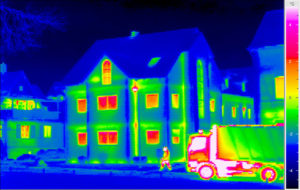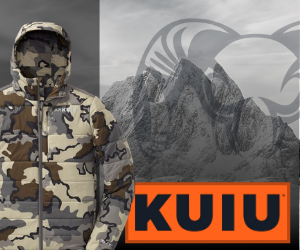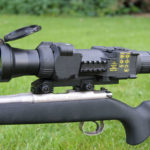
What is Thermal Imaging?
Thermal imaging allows people to see objects or people who cannot otherwise be seen by the naked eye. Every object whether man-made or natural emits heat in form of infrared energy. Thermal imaging uses the changes in this energy between objects to allow you to see them in instances that there is no visibility like during the night and through walls, concrete, in poor weather conditions or any other sight blockers. Thermal imaging widens your line of sight.
Thermal imaging cameras store the temperatures emitted by different objects in a frame and give a color to each temperature. Red, yellow and orange are mostly given to warmer temperatures while blue, green and purple are given to cooler temperatures. For example, when someone is standing in the middle of a room surrounded by multiple objects, they will depict red, yellow and orange colors while the surrounding colors will depict blue, green and purple colors. The human body is likely to register the highest temperatures in a room.
How Thermal Imaging Works
The concept of how light works is the first step to understanding how thermal imaging works. The energy level in a wave of light is directly proportional to its wavelength. High energy levels come from shorter wavelengths. The violet color has the most energy through the visible light while color red has the least energy. The infrared light spectrum lies just next to the visible light spectrum. The infrared right exists in three categories:
1. Thermal-infrared (thermal-IR) which occupies the most part of the infrared spectrum with wavelengths of 3 to over 30 microns.
2. Mid-infrared (mid-IR) with wavelengths of 1.3 to 3 microns.
3. Near-infrared (near-IR) which is the infrared spectrum that is closest to visible light with wavelengths of 0.7 to 1.3 microns.
Mini-infrared is mostly used in electronic devices including those with remote controls. Thermal cameras have microbolometers, which are tiny measuring devices present in each pixel to capture infrared radiation. The microbolometer stores the temperature and gives the pixel a corresponding color. The resolution of a thermal camera is relatively low compared to normal cameras due to this. They have a resolution of approximately 640×480.
A camera uses a thermal scope lens for thermal imaging. The infrared detector scans a focused light creating a clear temperature pattern known as a thermogram. This process occurs in the blink of an eye. This detector provides temperature patterns from multiple points of view in the area focused with light. The thermogram is then transformed into electric impulses. The electric impulses are transferred to a signal-processing unit, which is in form of a circuit board. The circuit board has an impressive chip that transforms infrared elements into data for display purposes. The data appears then appears in form of colors depending on the intensity of the wavelength of the infrared emissions. All the impulses from the infrared elements create an image visible to the eye.
The Difference between Thermal Imaging and Night Vision
Thermal imaging is a form of night vision since it enables you to see in the dark but that is not its sole purpose. If you just want to see through the dark, there are other options you can consider using apart from thermal imaging. A night vision camera will capture shorter infrared wavelengths compared to thermal cameras. Night vision cameras will not be able to capture longer infrared wavelengths as thermal cameras do.
Thermal imaging can separate people or objects from their surroundings in the most difficult of circumstances. It makes it possible for officers to locate suspects, aim and eliminate only the person they are after. It clears your vision and directs you to your particular target. This technology has revolutionized law enforcement, businesses, and life at large.
Conclusion: How Does Thermal Imaging Work
Hope this article helped! Thanks for reading!
Did this article help? We would love it if you left a 5 star review!
Anything we could improve on? Shoot us a message!








